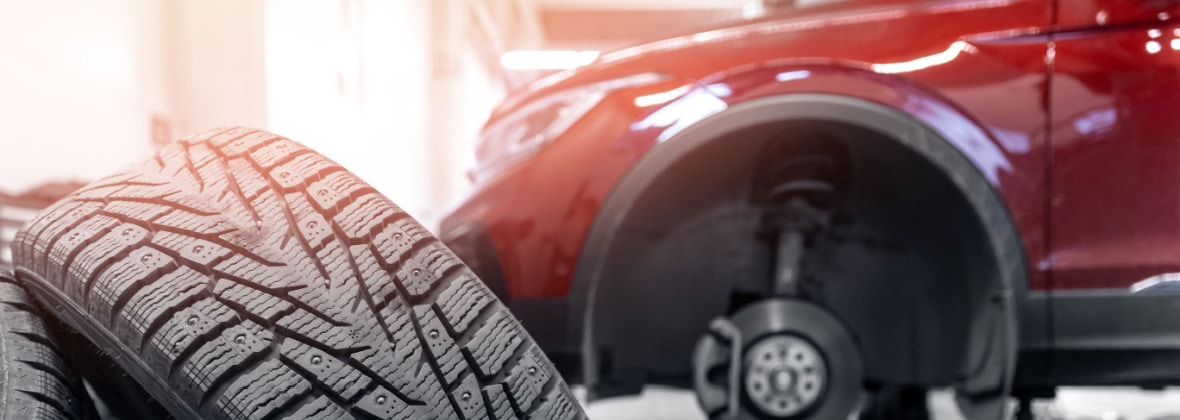Best Winter Tire Maintenance Plan For Long-Lasting Snow Performance
February 27, 2023
Tires

The best winter tires don’t come cheap, but you get what you pay for with unparalleled snow traction, stopping power, and tread life.
For example, the Goodyear WinterCommand stops 6 feet shorter than the leading competitors, and it is guaranteed for 105,000km of high-performance winter driving.
Of course, if you want to maintain this level of snow performance, max out your tires’ service life, and get the greatest return on your investment, you’ll need a good maintenance plan.
That’s what today’s post is all about. Read on to learn how to create the best winter tire maintenance plan for long-lasting performance, or contact your local TIRECRAFT to get a free quote on any service right away.
How To Create The Best Winter Tire Maintenance Plan: 5 Steps To Success
1. Commit To Regular Pressure Checks And Top-Ups
In Riding on Air, a consumer auto maintenance guide prepared by Transport Canada, researchers reported that about 50% of vehicles on the road in Canada have at least one tire that is either over or underinflated by more than 10%.
This not only represents a real safety issue, increasing the risks of poor handling, braking issues, and tire blowout; it is also a major money pit! After all, fuel economy drops by 0.2% for every 1 PSI your tires are underinflated. Additionally, under or overinflated tires are much more vulnerable to uneven tread wear, which ruins tire performance and forces you to pay for replacements much sooner.
And you cannot rely on the “eye test” to tell you when your tires need a top-up. “Even though they may look fine, they may be underinflated by as much as 20%,” warns Transport Canada researchers. The same is true of most tire pressure monitoring systems (TPMS), which light up after 20-25% pressure loss.
Accordingly, the best winter tire maintenance plans include regular manual air pressure checks and top-ups, at least once per month. If you don’t have a gauge handy, visit your local TIRECRAFT to pick one up or get a free check and top-up with your next service.
2. Clean Your Winter Tires As Needed
Most drivers will be able to get through the winter without it, but there are some situations where cleanings may be required. For example, if your tires are absolutely caked in salt and other contaminants, it can be a good idea to clean them off part way through the season to protect the rubber. You should also make time for tire cleaning if the siping, slush evacuation channels, and treads are packed with mud, as this can cause unpredictable snow performance.
Of course, you’ll also need to clean your tires before you store them.
Whether you’re making time for a mid-season cleaning or preparing your tires for storage, we recommend the following simple method:
- Spray your tires down before you begin
- Use a mild detergent or tire cleaner product approved by a qualified tire tech
- Scrub your tires thoroughly with a soft-bristled brush
- Give everything a good rinse
- Dry your tires thoroughly before use or storage
3. Rotate Your Tires During Every Changeover
To prevent uneven tire wear, poor fuel efficiency, and performance drop-offs, most tire experts recommend rotating your tires once every 6 months or 10,000km of driving.
At TIRECRAFT, we rotate your tires as part of every changeover service for your convenience, and we can also help you earlier in the season if you hit 10,000km before winter passes.
4. Check Alignment Annually, Or After Any Winter Driving Incident
At TIRECRAFT, we generally recommend checking your vehicle’s alignment after 12 months or 20,000km of driving. This service ensures your rubber meets the road at the correct angle, which preserves your tread life, improves fuel efficiency, and makes your vehicle more responsive to steering inputs.
You should also get your alignment checked after any significant winter driving incidents, such as a minor collision or hard impact with a snow bank or curb.
5. The Best Winter Tires Deserve Top-shelf Storage
Improper winter tire storage can lead to dry rot, poor performance, and loss of tire warranty coverage. But this can all be easily avoided by following these simple storage practices:
- Clean your tires before storing
- Store your tires in a cool, dry, dark room with consistent temperature and low humidity
- Keep tires out of direct sunlight
- Make sure your tires do not come into contact with any solvents, fuels, or other liquids
- Keep your tires away from naturally occurring ozone or electric motors
To get more help or get a free quote on pro tire storage from a TIRECRAFT depot near you, get in touch with our tire techs.
Put The Best Winter Tire Maintenance Plan In Motion: Call TIRECRAFT
To get a free quote on any of the tire maintenance services mentioned above, and find out how to save more on upkeep with our exclusive customer rewards program, get in touch with your local TIRECRAFT.
Back

